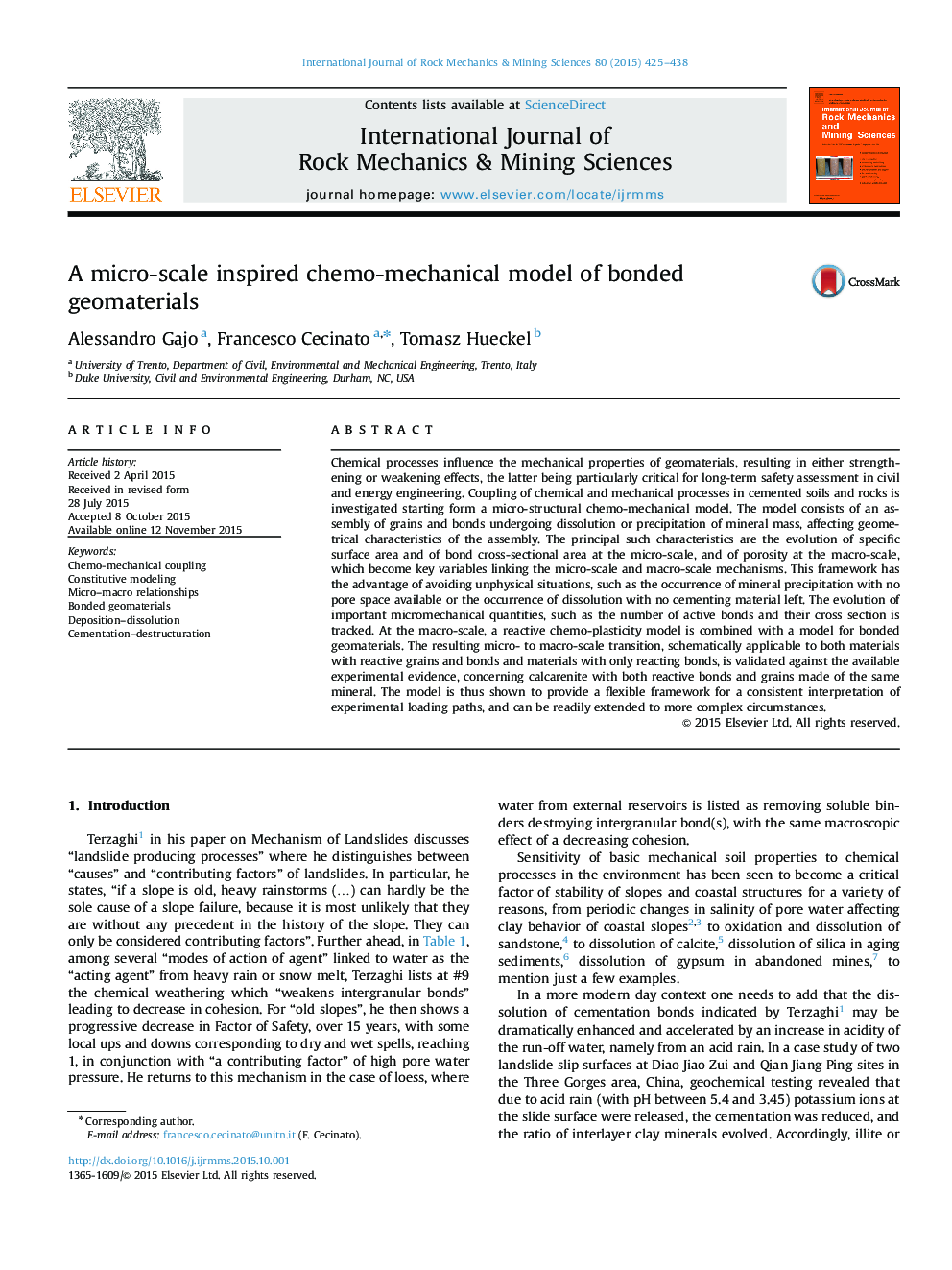| Article ID | Journal | Published Year | Pages | File Type |
|---|---|---|---|---|
| 809045 | International Journal of Rock Mechanics and Mining Sciences | 2015 | 14 Pages |
•A microscale-inspired model for bonded geomaterials is proposed and validated.•The key aspects of dissolution/deposition and mechanical debonding are captured.•Easto-plastic coupling is incorporated in a coupled chemo-mechanical model.•Evolving specific reactive area of solids and bond cross section are key features.•The model provides a powerful open framework able to include additional effects.
Chemical processes influence the mechanical properties of geomaterials, resulting in either strengthening or weakening effects, the latter being particularly critical for long-term safety assessment in civil and energy engineering. Coupling of chemical and mechanical processes in cemented soils and rocks is investigated starting form a micro-structural chemo-mechanical model. The model consists of an assembly of grains and bonds undergoing dissolution or precipitation of mineral mass, affecting geometrical characteristics of the assembly. The principal such characteristics are the evolution of specific surface area and of bond cross-sectional area at the micro-scale, and of porosity at the macro-scale, which become key variables linking the micro-scale and macro-scale mechanisms. This framework has the advantage of avoiding unphysical situations, such as the occurrence of mineral precipitation with no pore space available or the occurrence of dissolution with no cementing material left. The evolution of important micromechanical quantities, such as the number of active bonds and their cross section is tracked. At the macro-scale, a reactive chemo-plasticity model is combined with a model for bonded geomaterials. The resulting micro- to macro-scale transition, schematically applicable to both materials with reactive grains and bonds and materials with only reacting bonds, is validated against the available experimental evidence, concerning calcarenite with both reactive bonds and grains made of the same mineral. The model is thus shown to provide a flexible framework for a consistent interpretation of experimental loading paths, and can be readily extended to more complex circumstances.
